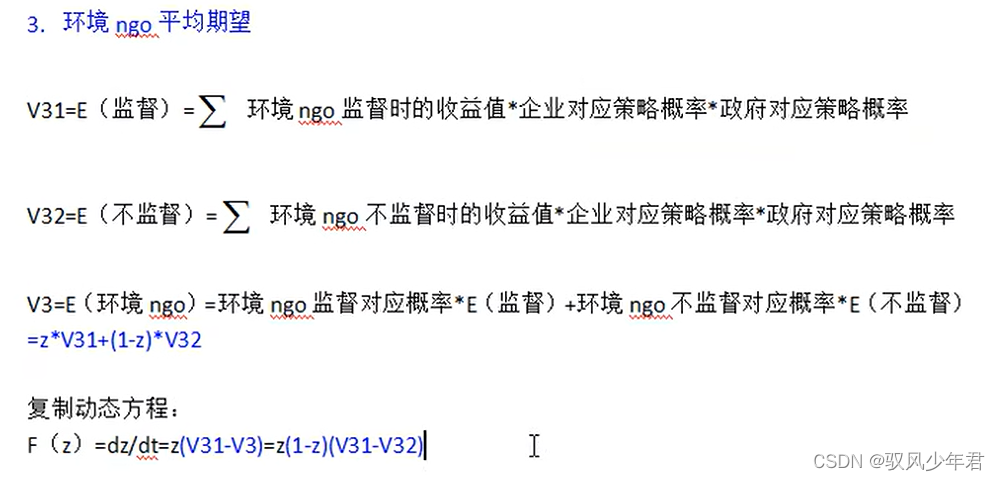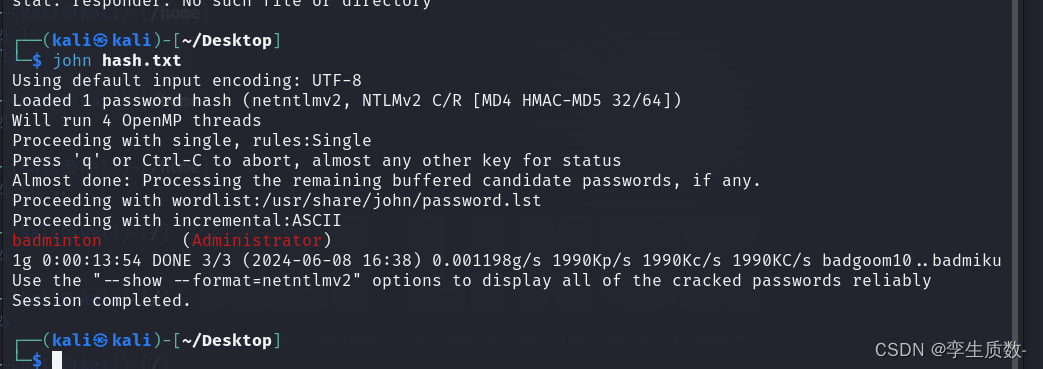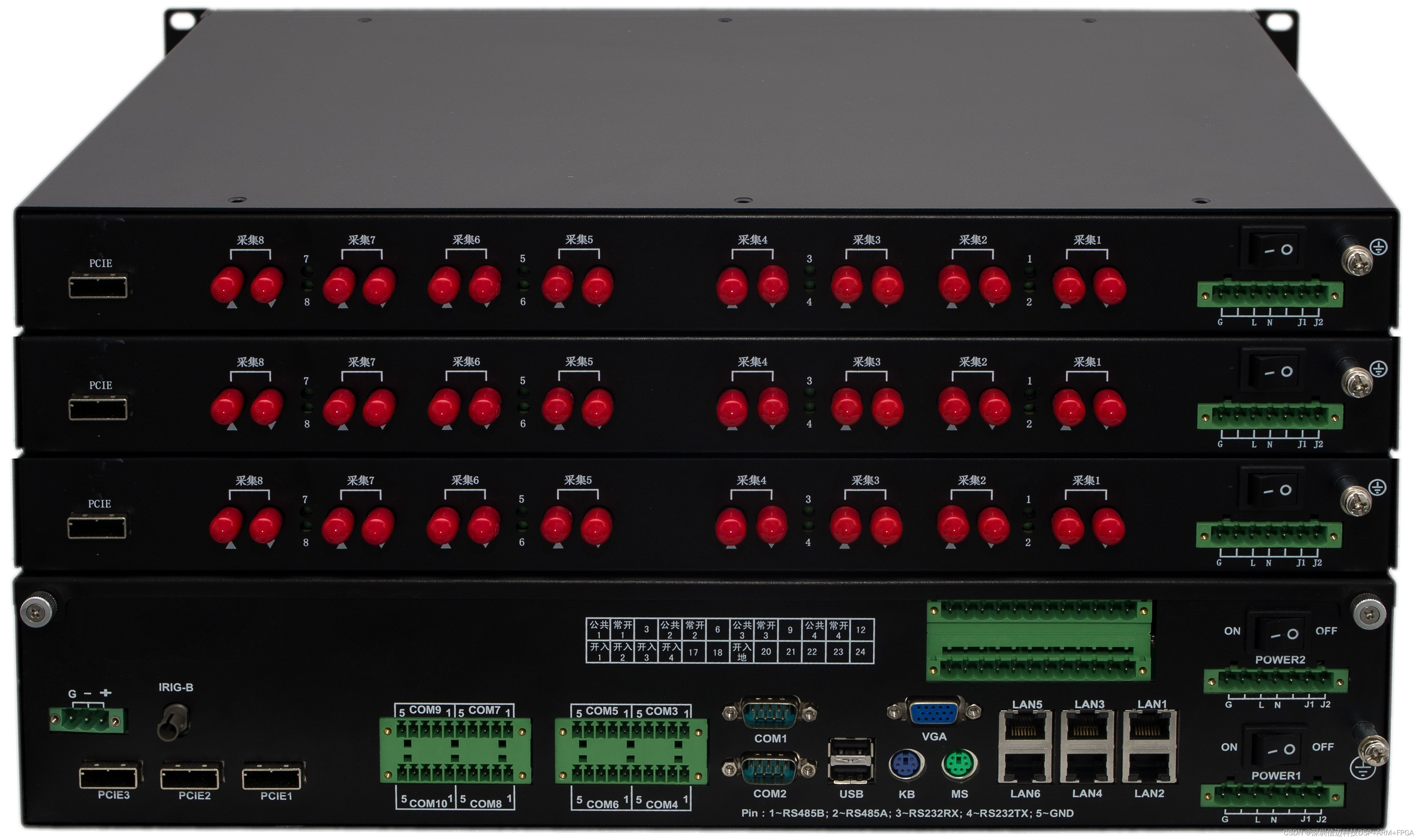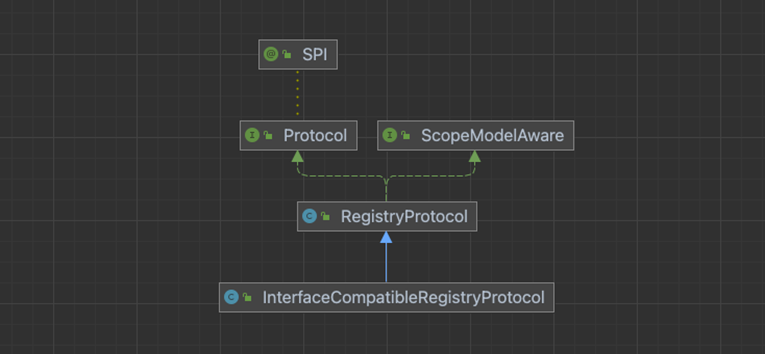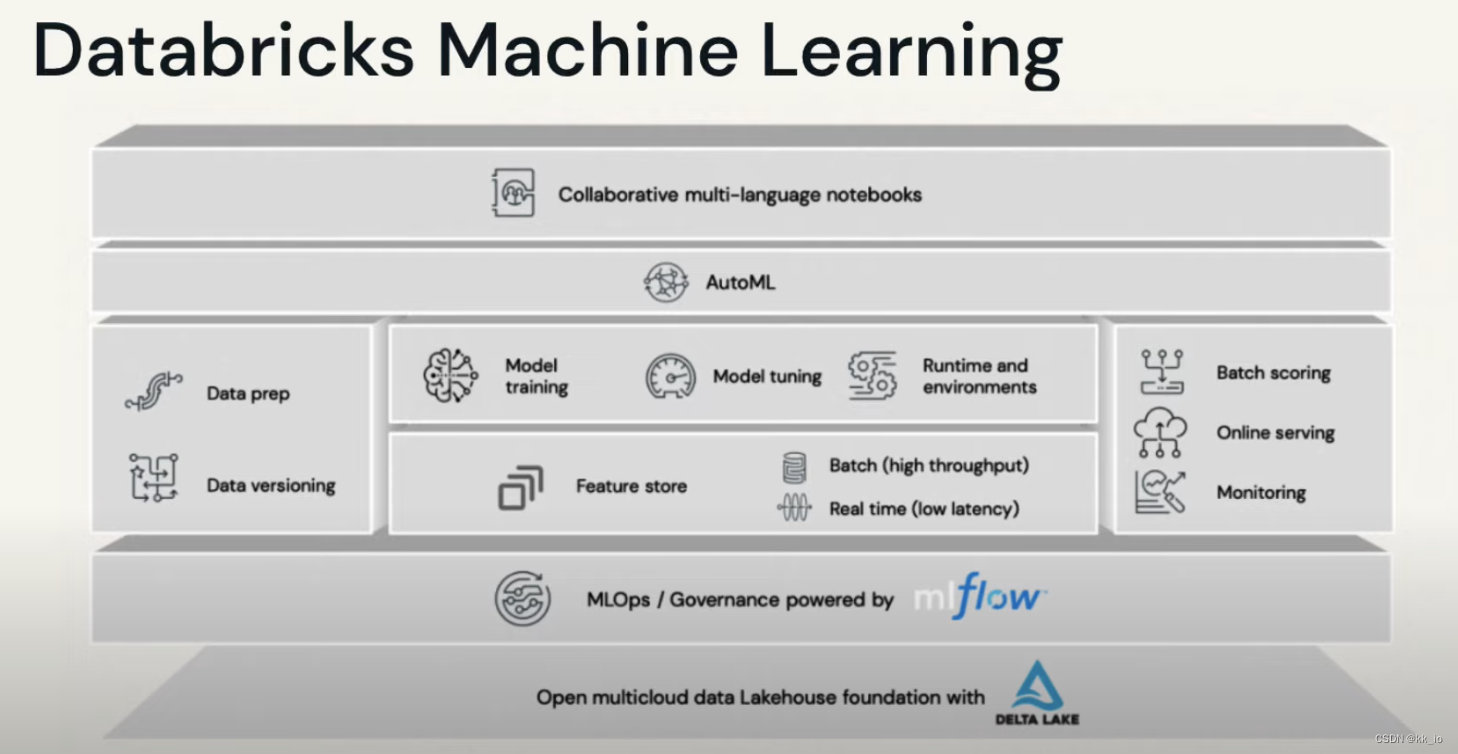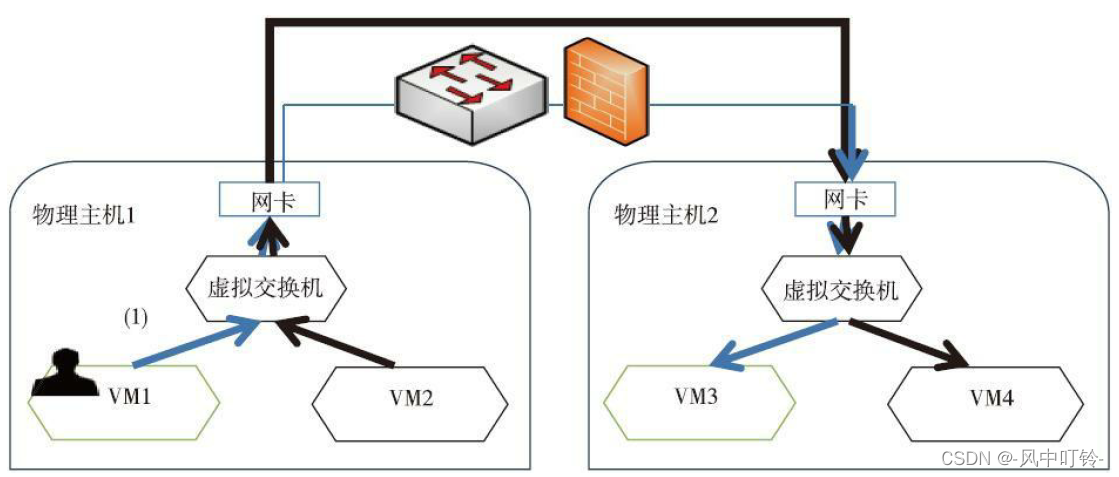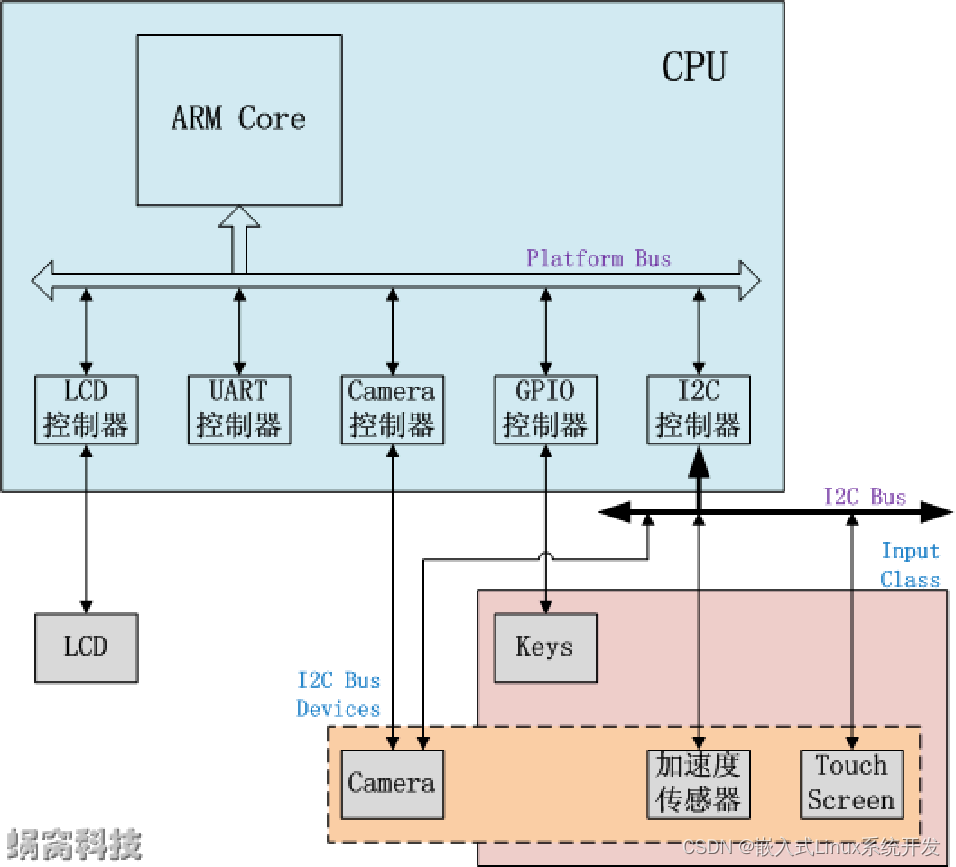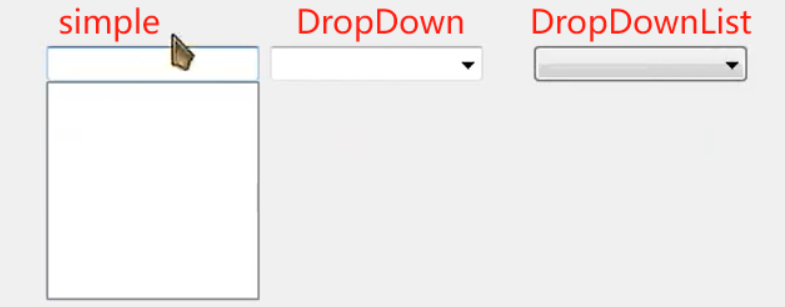LlaMA 3 系列博客
基于 LlaMA 3 + LangGraph 在windows本地部署大模型 (一)
基于 LlaMA 3 + LangGraph 在windows本地部署大模型 (二)
基于 LlaMA 3 + LangGraph 在windows本地部署大模型 (三)
基于 LlaMA 3 + LangGraph 在windows本地部署大模型 (四)
基于 LlaMA 3 + LangGraph 在windows本地部署大模型 (五)
基于 LlaMA 3 + LangGraph 在windows本地部署大模型 (六)
基于 LlaMA 3 + LangGraph 在windows本地部署大模型 (七)
基于 LlaMA 3 + LangGraph 在windows本地部署大模型 (八)
基于 LlaMA 3 + LangGraph 在windows本地部署大模型 (九)
基于 LlaMA 3 + LangGraph 在windows本地部署大模型 (十)
构建安全的GenAI/LLMs核心技术解密之大模型对抗攻击(一)
构建安全的GenAI/LLMs核心技术解密之大模型对抗攻击(二)
构建安全的GenAI/LLMs核心技术解密之大模型对抗攻击(三)
构建安全的GenAI/LLMs核心技术解密之大模型对抗攻击(四)
构建安全的GenAI/LLMs核心技术解密之大模型对抗攻击(五)
你好 GPT-4o!
大模型标记器之Tokenizer可视化(GPT-4o)
大模型标记器 Tokenizer之Byte Pair Encoding (BPE) 算法详解与示例
大模型标记器 Tokenizer之Byte Pair Encoding (BPE)源码分析
大模型之自注意力机制Self-Attention(一)
大模型之自注意力机制Self-Attention(二)
大模型之自注意力机制Self-Attention(三)
基于 LlaMA 3 + LangGraph 在windows本地部署大模型 (十一)
Llama 3 模型家族构建安全可信赖企业级AI应用之 Code Llama (一)
Llama 3 模型家族构建安全可信赖企业级AI应用之 Code Llama (二)
Llama 3 模型家族构建安全可信赖企业级AI应用之 Code Llama (三)
Llama 3 模型家族构建安全可信赖企业级AI应用之 Code Llama (四)
Llama 3 模型家族构建安全可信赖企业级AI应用之 Code Llama (五)
Llama 3 模型家族构建安全可信赖企业级AI应用之使用 Llama Guard 保护大模型对话(一)
Llama 3 模型家族构建安全可信赖企业级AI应用之使用 Llama Guard 保护大模型对话(二)
Llama 3 模型家族构建安全可信赖企业级AI应用之使用 Llama Guard 保护大模型对话(三)
大模型之深入理解Transformer位置编码(Positional Embedding)
大模型之深入理解Transformer Layer Normalization(一)
大模型之深入理解Transformer Layer Normalization(二)
大模型之深入理解Transformer Layer Normalization(三)
大模型之一步一步使用PyTorch编写Meta的Llama 3代码(一)初学者的起点
大模型之一步一步使用PyTorch编写Meta的Llama 3代码(二)矩阵操作的演练
大模型之一步一步使用PyTorch编写Meta的Llama 3代码(三)初始化一个嵌入层
大模型之一步一步使用PyTorch编写Meta的Llama 3代码(四)预先计算 RoPE 频率
大模型之一步一步使用PyTorch编写Meta的Llama 3代码(五)预先计算因果掩码
大模型之一步一步使用PyTorch编写Meta的Llama 3代码(六)首次归一化:均方根归一化(RMSNorm)
大模型之一步一步使用PyTorch编写Meta的Llama 3代码(七) 初始化多查询注意力
大模型之一步一步使用PyTorch编写Meta的Llama 3代码(八)旋转位置嵌入
大模型之一步一步使用PyTorch编写Meta的Llama 3代码(九) 计算自注意力
大模型之一步一步使用PyTorch编写Meta的Llama 3代码(十) 残差连接及SwiGLU FFN
大模型之一步一步使用PyTorch编写Meta的Llama 3代码(十一)输出概率分布 及损失函数计算
大模型之使用PyTorch编写Meta的Llama 3实际功能代码(一)加载简化分词器及设置参数
大模型之使用PyTorch编写Meta的Llama 3实际功能代码(二)RoPE 及注意力机制
大模型之使用PyTorch编写Meta的Llama 3实际功能代码(三) FeedForward 及 Residual Layers
大模型之使用PyTorch编写Meta的Llama 3实际功能代码(四) 构建 Llama3 类模型本身
大模型之使用PyTorch编写Meta的Llama 3实际功能代码(五)训练并测试你自己的 minLlama3
大模型之使用PyTorch编写Meta的Llama 3实际功能代码(六)加载已经训练好的miniLlama3模型
Llama 3 模型家族构建安全可信赖企业级AI应用之使用 Llama Guard 保护大模型对话 (四)
Llama 3 模型家族构建安全可信赖企业级AI应用之使用 Llama Guard 保护大模型对话 (五)
Llama 3 模型家族构建安全可信赖企业级AI应用之使用 Llama Guard 保护大模型对话 (六)
Llama 3 模型家族构建安全可信赖企业级AI应用之使用 Llama Guard 保护大模型对话 (七)
Llama 3 模型家族构建安全可信赖企业级AI应用之使用 Llama Guard 保护大模型对话 (八)
Llama 3 模型家族构建安全可信赖企业级AI应用之 CyberSecEval 2:量化 LLM 安全和能力的基准(一)
Llama 3 模型家族构建安全可信赖企业级AI应用之 CyberSecEval 2:量化 LLM 安全和能力的基准(二)
Llama 3 模型家族构建安全可信赖企业级AI应用之 CyberSecEval 2:量化 LLM 安全和能力的基准(三)
Llama 3 模型家族构建安全可信赖企业级AI应用之 CyberSecEval 2:量化 LLM 安全和能力的基准(四)
Llama 3 模型家族构建安全可信赖企业级AI应用之code shield(一)Code Shield简介
Llama 3 模型家族构建安全可信赖企业级AI应用之code shield(二)防止 LLM 生成不安全代码
Llama 3 模型家族构建安全可信赖企业级AI应用之code shield(三)Code Shield代码示例
Llama模型家族之使用 Supervised Fine-Tuning(SFT)微调预训练Llama 3 语言模型(一) LLaMA-Factory简介
Llama模型家族之使用 Supervised Fine-Tuning(SFT)微调预训练Llama 3 语言模型(二) LLaMA-Factory训练方法及数据集
大模型之Ollama:在本地机器上释放大型语言模型的强大功能
Llama模型家族之使用 Supervised Fine-Tuning(SFT)微调预训练Llama 3 语言模型(三)通过Web UI微调
Llama模型家族之使用 Supervised Fine-Tuning(SFT)微调预训练Llama 3 语言模型(四)通过命令方式微调
Llama模型家族之使用 Supervised Fine-Tuning(SFT)微调预训练Llama 3 语言模型(五) 基于已训练好的模型进行推理
Llama模型家族之使用 Supervised Fine-Tuning(SFT)微调预训练Llama 3 语言模型(六)Llama 3 已训练的大模型合并LoRA权重参数
Llama模型家族之使用 Supervised Fine-Tuning(SFT)微调预训练Llama 3 语言模型(七) 使用 LoRA 微调 LLM 的实用技巧
Llama模型家族之使用 Supervised Fine-Tuning(SFT)微调预训练Llama 3 语言模型(八) 使用 LoRA 微调 LLM 的实用技巧
Llama模型家族之使用 Supervised Fine-Tuning(SFT)微调预训练Llama 3 语言模型(九) 使用 LoRA 微调常见问题答疑
Llama模型家族之使用 Supervised Fine-Tuning(SFT)微调预训练Llama 3 语言模型(十) 使用 LoRA 微调常见问题答疑
Llama模型家族训练奖励模型Reward Model技术及代码实战(一)简介
Llama模型家族训练奖励模型Reward Model技术及代码实战(二)从用户反馈构建比较数据集
Llama模型家族训练奖励模型Reward Model技术及代码实战(三) 使用 TRL 训练奖励模型
Llama模型家族之RLAIF 基于 AI 反馈的强化学习(一)RLHF简介
Llama模型家族之RLAIF 基于 AI 反馈的强化学习(二)RLHF 与RAIF比较
Llama模型家族之RLAIF 基于 AI 反馈的强化学习(三) RLAIF 的工作原理
Llama模型家族之RLAIF 基于 AI 反馈的强化学习(四)RLAIF 优势
Llama模型家族之RLAIF 基于 AI 反馈的强化学习(五)RLAIF 挑战
Llama模型家族之RLAIF 基于 AI 反馈的强化学习(六) RLAIF 代码实战
Llama模型家族之RLAIF 基于 AI 反馈的强化学习(七) RLAIF 代码实战
Llama模型家族之RLAIF 基于 AI 反馈的强化学习(八) RLAIF 代码实战
Llama模型家族之RLAIF 基于 AI 反馈的强化学习(九) RLAIF 代码实战
Llama模型家族之RLAIF 基于 AI 反馈的强化学习(十) RLAIF 代码实战
Llama模型家族之拒绝抽样(Rejection Sampling)(一)
Llama模型家族之拒绝抽样(Rejection Sampling)(二)均匀分布简介
Llama模型家族之拒绝抽样(Rejection Sampling)(三)确定缩放常数以优化拒绝抽样方法
Llama模型家族之拒绝抽样(Rejection Sampling)(四) 蒙特卡罗方法在拒绝抽样中的应用:评估线与样本接受标准
Llama模型家族之拒绝抽样(Rejection Sampling)(五) 蒙特卡罗算法在拒绝抽样中:均匀分布与样本接受标准
Llama模型家族之拒绝抽样(Rejection Sampling)(六) 拒绝抽样中的蒙特卡罗算法:重复过程与接受标准
Llama模型家族之拒绝抽样(Rejection Sampling)(七) 优化拒绝抽样:选择高斯分布以减少样本拒绝
Llama模型家族之拒绝抽样(Rejection Sampling)(八) 代码实现
Llama模型家族之拒绝抽样(Rejection Sampling)(九) 强化学习之Rejection Sampling
Llama模型家族之使用 ReFT技术对 Llama-3 进行微调(一)ReFT简介
Llama模型家族之使用 ReFT技术对 Llama-3 进行微调(二) PyReFT简介
Llama模型家族之使用 ReFT技术对 Llama-3 进行微调(三)为 ReFT 微调准备模型及数据集
Llama模型家族之使用 ReFT技术对 Llama-3 进行微调(四) ReFT 微调训练及模型推理
Llama模型家族之Stanford NLP ReFT源代码探索 (一)数据预干预
pyreft/config.py
import pyvene as pv
import json
class ReftConfig(pv.IntervenableConfig):
"""
Reft config for Reft methods.
"""
def __init__(
self, **kwargs,
):
super().__init__(**kwargs)
pyreft/dataset.py
IGNORE_INDEX = -100
no_header_prompt_template = """\
### Instruction:
%s
### Response:
"""
prompt_input = """Below is an instruction that \
describes a task, paired with an input that provides \
further context. Write a response that appropriately \
completes the request.
### Instruction:
%s
### Input:
%s
### Response:
"""
prompt_no_input = """Below is an instruction that \
describes a task. Write a response that appropriately \
completes the request.
### Instruction:
%s
### Response:
"""
import os
import abc
import copy
import logging
from tqdm import tqdm
from dataclasses import dataclass, field
from typing import Dict, Optional, Sequence, Union, List, Any
import torch
import random
import transformers
from torch.utils.data import Dataset
import datasets
from datasets import load_dataset
from collections import defaultdict
from transformers import DataCollator
def parse_positions(positions: str):
# parse position
first_n, last_n = 0, 0
if "+" in positions:
first_n = int(positions.split("+")[0].strip("f"))
last_n = int(positions.split("+")[1].strip("l"))
else:
if "f" in positions:
first_n = int(positions.strip("f"))
elif "l" in positions:
last_n = int(positions.strip("l"))
return first_n, last_n
def get_intervention_locations(**kwargs):
"""
This function generates the intervention locations.
For your customized dataset, you want to create your own function.
"""
# parse kwargs
share_weights = kwargs["share_weights"] if "share_weights" in kwargs else False
last_position = kwargs["last_position"]
if "positions" in kwargs:
_first_n, _last_n = parse_positions(kwargs["positions"])
else:
_first_n, _last_n = kwargs["first_n"], kwargs["last_n"]
num_interventions = kwargs["num_interventions"]
pad_mode = kwargs["pad_mode"] if "pad_mode" in kwargs else "first"
first_n = min(last_position // 2, _first_n)
last_n = min(last_position // 2, _last_n)
pad_amount = (_first_n - first_n) + (_last_n - last_n)
pad_position = -1 if pad_mode == "first" else last_position
if share_weights or (first_n == 0 or last_n == 0):
position_list = [i for i in range(first_n)] + \
[i for i in range(last_position - last_n, last_position)] + \
[pad_position for _ in range(pad_amount)]
intervention_locations = [position_list]*num_interventions
else:
left_pad_amount = (_first_n - first_n)
right_pad_amount = (_last_n - last_n)
left_intervention_locations = [i for i in range(first_n)] + [pad_position for _ in range(left_pad_amount)]
right_intervention_locations = [i for i in range(last_position - last_n, last_position)] + \
[pad_position for _ in range(right_pad_amount)]
# after padding, there could be still length diff, we need to do another check
left_len = len(left_intervention_locations)
right_len = len(right_intervention_locations)
if left_len > right_len:
right_intervention_locations += [pad_position for _ in range(left_len-right_len)]
else:
left_intervention_locations += [pad_position for _ in range(right_len-left_len)]
intervention_locations = [left_intervention_locations]*(num_interventions//2) + \
[right_intervention_locations]*(num_interventions//2)
return intervention_locations
@dataclass
class ReftDataCollator(object):
"""Collate examples for ReFT."""
data_collator: DataCollator
def __call__(self, instances: Sequence[Dict]) -> Dict[str, torch.Tensor]:
batch_inputs = self.data_collator(instances)
max_seq_length = batch_inputs["input_ids"].shape[-1]
batch_inputs["intervention_locations"] = batch_inputs["intervention_locations"][..., :max_seq_length]
return batch_inputs
class ReftDataset(Dataset):
__metaclass__ = abc.ABCMeta
def __init__(
self, task: str, data_path: str,
tokenizer: transformers.PreTrainedTokenizer,
data_split="train", dataset=None, seed=42, max_n_example=None,
**kwargs,
):
super(ReftDataset, self).__init__()
result = defaultdict(list)
# setup
self.tokenizer = tokenizer
self.first_n, self.last_n = parse_positions(kwargs["position"])
self.task = task
self.data_path = data_path
self.data_split = data_split
self.dataset = dataset
self.seed = seed
self.max_n_example = max_n_example
self.pad_mode = "first"
self.fields_to_pad = ["input_ids", "labels"]
self.fields_to_mask = ["input_ids"]
# load the dataset
self.preprocess(kwargs)
self.task_dataset = self.load_dataset()
# kwargs settings
self.postprocess(kwargs)
# tokenize and intervene
self.result = []
for i, data_item in enumerate(tqdm(self.task_dataset)):
tokenized, last_position = self.tokenize(data_item)
tokenized = self.compute_intervention_and_subspaces(i, data_item, tokenized, last_position, **kwargs)
self.result.append(tokenized)
@abc.abstractmethod
def tokenize(self, data_item, **kwargs):
"""How to tokenize a single data item. Override this function!"""
return
def preprocess(self, kwargs):
"""Preprocessing."""
return
def postprocess(self, kwargs):
"""Postprocessing."""
return
def __len__(self):
return len(self.result)
def __getitem__(self, i) -> Dict[str, torch.Tensor]:
return copy.deepcopy(self.result[i])
def load_dataset(self):
"""Load the dataset (or a portion of it) from HF or a local file."""
# load the dataset
if self.dataset is None:
print("loading data for dataset: ", self.data_path)
if self.data_path is None:
task_dataset = load_dataset(self.task, split=self.data_split)
elif self.data_path.endswith(".json"):
task_dataset = load_dataset("json", data_files=self.data_path, split="train")
else:
task_dataset = load_dataset(self.task, self.data_path, split=self.data_split)
else:
task_dataset = self.dataset
# select n random examples if specificed
if self.max_n_example is not None:
task_dataset = task_dataset.shuffle(seed=self.seed)
task_dataset = task_dataset.select(range(self.max_n_example))
# save raw_dataset pointer for access raw strings
self.raw_dataset = task_dataset if self.data_split != "train" else None
return task_dataset
def get_intervention_locations(self, **kwargs):
return get_intervention_locations(**kwargs)
def compute_intervention_and_subspaces(self, id: int, data_item, result: dict, last_position: int, **kwargs):
# compute intervention locs
intervention_locations = self.get_intervention_locations(last_position=last_position, first_n=self.first_n,
last_n=self.last_n, pad_mode=self.pad_mode, **kwargs)
result["intervention_locations"] = intervention_locations
result["id"] = id
# add a single padding token BEFORE input_ids and fix everything
if self.pad_mode == "first":
for field in self.fields_to_pad:
if field not in result:
continue
if field == "labels":
result[field] = torch.cat((torch.tensor([IGNORE_INDEX,]), result[field]))
else:
result[field] = torch.cat((torch.tensor([self.tokenizer.pad_token_id,]), result[field]))
result["intervention_locations"] = (torch.IntTensor(result["intervention_locations"]) + 1).tolist()
elif self.pad_mode == "last":
for field in self.fields_to_pad:
if field not in result:
continue
if field == "labels":
result[field] = torch.cat((result[field], torch.tensor([IGNORE_INDEX,])))
else:
result[field] = torch.cat((result[field], torch.tensor([self.tokenizer.pad_token_id,])))
# attention masks
if len(self.fields_to_mask) == 1:
result["attention_mask"] = (result[self.fields_to_mask[0]] != self.tokenizer.pad_token_id).int()
else:
for field in self.fields_to_mask:
result[f"{field}_mask"] = (result[field] != self.tokenizer.pad_token_id).int()
# subspaces
if "subspaces" in data_item:
num_interventions = kwargs["num_interventions"]
share_weights = kwargs["share_weights"] if "share_weights" in kwargs else False
if share_weights:
num_interventions = num_interventions // 2
# we now assume each task has a constant subspaces
_subspaces = [data_item["subspaces"]] * num_interventions
result["subspaces"] = _subspaces
return result
class ReftRawDataset(Dataset):
def __init__(
self, task: str, data_path: str,
tokenizer: transformers.PreTrainedTokenizer,
data_split="train", dataset=None, seed=42, max_n_example=None,
**kwargs,
):
super(ReftRawDataset, self).__init__()
result = defaultdict(list)
if dataset is None:
print("loading data for dataset: ", data_path)
if data_path.endswith(".json"):
task_dataset = load_dataset("json", data_files=data_path)[data_split]
else:
task_dataset = load_dataset(data_path)[data_split]
else:
task_dataset = dataset
if max_n_example is not None:
task_dataset = task_dataset.shuffle(seed=seed)
task_dataset = task_dataset.select(range(max_n_example))
# save raw_dataset pointer for access raw strings
self.raw_dataset = task_dataset if data_split != "train" else None
first_n, last_n = parse_positions(kwargs["position"])
# tokenize and intervene
for i, data_item in enumerate(tqdm(task_dataset)):
base_prompt = data_item["instruction"]
base_input = base_prompt + data_item["output"] + tokenizer.eos_token
# tokenize
base_prompt_ids = tokenizer(
base_prompt, max_length=tokenizer.model_max_length, truncation=True, return_tensors="pt")["input_ids"][0]
base_prompt_length = len(base_prompt_ids)
if data_split == "train":
base_input_ids = tokenizer(
base_input, max_length=tokenizer.model_max_length, truncation=True, return_tensors="pt")["input_ids"][0]
output_ids = copy.deepcopy(base_input_ids)
output_ids[:base_prompt_length] = IGNORE_INDEX
result["input_ids"].append(base_input_ids)
result["labels"].append(output_ids)
else:
# print("Assuming test split for now")
result["input_ids"].append(base_prompt_ids)
last_position = base_prompt_length
# get intervention locations
intervention_locations = self.get_intervention_locations(
last_position=last_position,
first_n=first_n,
last_n=last_n,
pad_mode="first",
**kwargs
)
result["intervention_locations"].append(intervention_locations)
result["id"].append(i)
# add a single padding token BEFORE input_ids and fix everything
result["input_ids"][-1] = torch.cat((torch.tensor([tokenizer.pad_token_id,]), result["input_ids"][-1]))
if data_split == "train":
result["labels"][-1] = torch.cat((torch.tensor([IGNORE_INDEX]), result["labels"][-1]))
result["intervention_locations"][-1] = (torch.IntTensor(result["intervention_locations"][-1]) + 1).tolist()
result["attention_mask"].append((result["input_ids"][-1] != tokenizer.pad_token_id).int())
if "subspaces" in data_item:
num_interventions = kwargs["num_interventions"]
share_weights = kwargs["share_weights"] if "share_weights" in kwargs else False
if share_weights:
num_interventions = num_interventions // 2
# we now assume each task has a constant subspaces
_subspaces = [data_item["subspaces"]] * num_interventions
result["subspaces"].append(_subspaces)
self.input_ids = result["input_ids"]
self.attention_mask = result["attention_mask"]
self.intervention_locations = result["intervention_locations"]
self.labels = result["labels"] if "labels" in result else None
self.subspaces = result["subspaces"] if "subspaces" in result else None
self.id = result["id"]
def get_intervention_locations(self, **kwargs):
return get_intervention_locations(**kwargs)
def __len__(self):
return len(self.input_ids)
def __getitem__(self, i) -> Dict[str, torch.Tensor]:
return_dict = dict(
input_ids=self.input_ids[i],
attention_mask=self.attention_mask[i],
intervention_locations=self.intervention_locations[i],
id=self.id[i],
)
if self.labels is not None:
return_dict["labels"] = self.labels[i]
if self.subspaces is not None:
return_dict["subspaces"] = self.subspaces[i]
return return_dict
class ReftClassificationDataset(ReftDataset):
"""
A ReftClassificationDataset only contains a single text field
that we tokenize, intervene on a prefix + suffix of, and
compute subspace settings for. This is intended for classification
tasks.
Remember to pass in the input_field and label_field as kwargs.
"""
def preprocess(self, kwargs):
self.input_field = kwargs["input_field"]
self.label_field = kwargs["label_field"]
def tokenize(self, data_item):
result = {}
# input
input_ids = self.tokenizer(data_item[self.input_field], max_length=self.tokenizer.model_max_length,
truncation=True, return_tensors="pt")["input_ids"][0]
base_prompt_length = len(input_ids)
last_position = base_prompt_length - 1
result["input_ids"] = input_ids
# labels
if self.label_field == self.input_field:
result["labels"] = input_ids.clone()
elif self.label_field is not None:
labels = self.tokenizer(data_item[self.label_field], max_length=self.tokenizer.model_max_length,
truncation=True, return_tensors="pt")["input_ids"][0]
result["labels"] = labels
return result, last_position
class ReftGenerationDataset(ReftDataset):
"""
A ReftGenerationDataset contains an instruction and a
completion for each data item. We intervene on a prefix + suffix
of *only the instruction*. This is suitable for generation tasks
where you don't want inference overhead during decoding.
Remember to pass in the prompt_field and completion_field as kwargs.
"""
def preprocess(self, kwargs):
self.prompt_field = kwargs["prompt_field"]
self.completion_field = kwargs["completion_field"]
def tokenize(self, data_item):
result = {}
# prompt
prompt_ids = self.tokenizer(data_item[self.prompt_field], max_length=self.tokenizer.model_max_length,
truncation=True, return_tensors="pt")["input_ids"][0]
base_prompt_length = len(prompt_ids)
last_position = base_prompt_length - 1
# input
full_input = data_item[self.prompt_field] + data_item[self.completion_field] + self.tokenizer.eos_token
input_ids = self.tokenizer(full_input, max_length=self.tokenizer.model_max_length,
truncation=True, return_tensors="pt")["input_ids"][0]
result["input_ids"] = input_ids
# labels
output_ids = copy.deepcopy(input_ids)
output_ids[:base_prompt_length] = IGNORE_INDEX
result["labels"] = output_ids
return result, last_position
class ReftSupervisedDataset(ReftDataset):
"""
Alpaca-style supervised dataset. We intervene on a prefix + suffix
of the input. This is suitable for supervised fine-tuning tasks.
Remember to pass in the input_field, output_field, and instruction_field as kwargs.
"""
def preprocess(self, kwargs):
self.input_field = kwargs["input_field"]
self.output_field = kwargs["output_field"]
self.instruction_field = kwargs["instruction_field"]
def tokenize(self, data_item):
result = {}
# prompt
if self.input_field not in data_item or data_item[self.input_field] == "":
base_prompt = prompt_no_input % (data_item[self.instruction_field])
else:
base_prompt = prompt_input % (data_item[self.instruction_field], data_item[self.input_field])
prompt_ids = self.tokenizer(base_prompt, max_length=self.tokenizer.model_max_length,
truncation=True, return_tensors="pt")["input_ids"][0]
base_prompt_length = len(prompt_ids)
last_position = base_prompt_length - 1
# input
base_input = base_prompt + data_item[self.output_field] + self.tokenizer.eos_token
input_ids = self.tokenizer(base_input, max_length=self.tokenizer.model_max_length,
truncation=True, return_tensors="pt")["input_ids"][0]
result["input_ids"] = input_ids
# labels
output_ids = copy.deepcopy(input_ids)
output_ids[:base_prompt_length] = IGNORE_INDEX
result["labels"] = output_ids
return result, last_position
def make_last_position_supervised_chat_data_module(
tokenizer: transformers.PreTrainedTokenizer, model, inputs, outputs,
num_interventions=1, nonstop=False
) -> Dict:
"""Make dataset and collator for supervised fine-tuning."""
all_base_input_ids, all_intervention_locations, all_output_ids = [], [], []
for i in range(len(inputs)):
_input = inputs[i]
_output = outputs[i]
base_prompt = _input
base_input = base_prompt + _output
if not nonstop:
base_input += tokenizer.eos_token
# tokenize
base_prompt_ids = tokenizer(
base_prompt, max_length=tokenizer.model_max_length, truncation=True, return_tensors="pt")["input_ids"][0]
base_prompt_length = len(base_prompt_ids)
base_input_ids = tokenizer(
base_input, max_length=tokenizer.model_max_length, truncation=True, return_tensors="pt")["input_ids"][0]
output_ids = copy.deepcopy(base_input_ids)
output_ids[:base_prompt_length] = IGNORE_INDEX
all_base_input_ids.append(base_input_ids)
all_intervention_locations.append([[base_prompt_length - 1]]*num_interventions)
all_output_ids.append(output_ids)
train_dataset = datasets.Dataset.from_dict({
"input_ids": all_base_input_ids,
"intervention_locations": all_intervention_locations,
"labels": all_output_ids,
})
data_collator_fn = transformers.DataCollatorForSeq2Seq(
tokenizer=tokenizer,
model=model,
label_pad_token_id=-100,
padding="longest"
)
data_collator = ReftDataCollator(data_collator=data_collator_fn)
return dict(train_dataset=train_dataset, eval_dataset=None, data_collator=data_collator)
def make_last_position_supervised_data_module(
tokenizer: transformers.PreTrainedTokenizer, model, inputs, outputs,
num_interventions=1, nonstop=False
) -> Dict:
"""Make dataset and collator for supervised fine-tuning."""
all_base_input_ids, all_intervention_locations, all_output_ids = [], [], []
for i in range(len(inputs)):
_input = inputs[i]
_output = outputs[i]
base_prompt = _input
base_input = base_prompt + _output
if not nonstop:
base_input += tokenizer.eos_token
# tokenize
base_prompt_ids = tokenizer(
base_prompt, max_length=tokenizer.model_max_length, truncation=True, return_tensors="pt")["input_ids"][0]
base_prompt_length = len(base_prompt_ids)
base_input_ids = tokenizer(
base_input, max_length=tokenizer.model_max_length, truncation=True, return_tensors="pt")["input_ids"][0]
output_ids = copy.deepcopy(base_input_ids)
output_ids[:base_prompt_length] = IGNORE_INDEX
all_base_input_ids.append(base_input_ids)
all_intervention_locations.append([[base_prompt_length - 1]]*num_interventions)
all_output_ids.append(output_ids)
train_dataset = datasets.Dataset.from_dict({
"input_ids": all_base_input_ids,
"intervention_locations": all_intervention_locations,
"labels": all_output_ids,
})
data_collator_fn = transformers.DataCollatorForSeq2Seq(
tokenizer=tokenizer,
model=model,
label_pad_token_id=-100,
padding="longest"
)
data_collator = ReftDataCollator(data_collator=data_collator_fn)
return dict(train_dataset=train_dataset, eval_dataset=None, data_collator=data_collator)
def make_multiple_position_supervised_data_module(
tokenizer: transformers.PreTrainedTokenizer, model, inputs, outputs,
positions="f1+l1", num_interventions=1, nonstop=False, share_weights=False
) -> Dict:
"""Make dataset and collator for supervised fine-tuning."""
first_n, last_n = parse_positions(positions)
all_base_input_ids, all_intervention_locations, all_output_ids = [], [], []
for i in range(len(inputs)):
_input = inputs[i]
_output = outputs[i]
base_prompt = _input
base_input = base_prompt + _output
if not nonstop:
base_input += tokenizer.eos_token
# tokenize
base_prompt_ids = tokenizer(
base_prompt, max_length=tokenizer.model_max_length, truncation=True, return_tensors="pt")["input_ids"][0]
base_prompt_length = len(base_prompt_ids)
base_input_ids = tokenizer(
base_input, max_length=tokenizer.model_max_length, truncation=True, return_tensors="pt")["input_ids"][0]
output_ids = copy.deepcopy(base_input_ids)
output_ids[:base_prompt_length] = IGNORE_INDEX
intervention_locations = get_intervention_locations(
last_position=base_prompt_length,
first_n=first_n,
last_n=last_n,
pad_mode="last",
num_interventions=num_interventions,
share_weights=share_weights,
)
all_base_input_ids.append(base_input_ids)
all_intervention_locations.append(intervention_locations)
all_output_ids.append(output_ids)
train_dataset = datasets.Dataset.from_dict({
"input_ids": all_base_input_ids,
"intervention_locations": all_intervention_locations,
"labels": all_output_ids,
})
data_collator_fn = transformers.DataCollatorForSeq2Seq(
tokenizer=tokenizer,
model=model,
label_pad_token_id=-100,
padding="longest"
)
data_collator = ReftDataCollator(data_collator=data_collator_fn)
return dict(train_dataset=train_dataset, eval_dataset=None, data_collator=data_collator)
class ReftPreferenceDataset(ReftDataset):
"""
Different from ReftSupervisedDataset where we have
(x, y)
ReftPreferenceDataset contains (x, y1, y2) where y1 and y2
are constrastive pairs.
ReFT training objective is to generate y2, given (x, y1) and
the intervention.
"""
def preprocess(self, kwargs):
self.input_field = kwargs["input_field"]
self.instruction_field = kwargs["instruction_field"]
self.chosen_output_field = kwargs["chosen_output_field"]
self.rejected_output_field = kwargs["rejected_output_field"]
def tokenize(self, data_item):
result = {}
if self.input_field not in data_item or data_item[self.input_field] == "":
base_prompt = prompt_no_input % (data_item[self.instruction_field])
else:
base_prompt = prompt_input % (data_item[self.instruction_field], data_item[self.input_field])
# base input takes rejected output to steer away from.
base_input = base_prompt + data_item[self.rejected_output_field] + self.tokenizer.eos_token
# tokenize
base_prompt_ids = self.tokenizer(
base_prompt, max_length=self.tokenizer.model_max_length, truncation=True, return_tensors="pt")["input_ids"][0]
base_prompt_length = len(base_prompt_ids)
if self.data_split == "train":
base_input_ids = self.tokenizer(
base_input, max_length=self.tokenizer.model_max_length, truncation=True, return_tensors="pt")["input_ids"][0]
# base output takes chosen output to steer towards to.
base_output = base_prompt + data_item[self.chosen_output_field] + self.tokenizer.eos_token
base_output_ids = self.tokenizer(
base_output, max_length=self.tokenizer.model_max_length, truncation=True, return_tensors="pt")["input_ids"][0]
output_ids = base_output_ids
output_ids[:base_prompt_length] = IGNORE_INDEX
# padding! needs to be cautious here. let's unpack:
# pad inputs with pad_token_id so that attention masks can ignore these tokens.
# pad outputs with IGNORE_INDEX so that loss calculation can ignore these tokens.
# and the goal is to have input and output have the same length.
max_length = max(base_input_ids.size(0), output_ids.size(0))
input_pad_length = max_length - base_input_ids.size(0)
output_pad_length = max_length - output_ids.size(0)
input_pad_tensor = torch.full((input_pad_length,), self.tokenizer.pad_token_id, dtype=torch.long)
output_pad_tensor = torch.full((output_pad_length,), IGNORE_INDEX, dtype=torch.long)
base_input_ids_padded = torch.cat((base_input_ids, input_pad_tensor), dim=0)
output_ids_padded = torch.cat((output_ids, output_pad_tensor), dim=0)
result["input_ids"] = base_input_ids_padded
result["labels"] = output_ids_padded
else:
# print("Assuming test split for now")
result["input_ids"] = base_prompt_ids
last_position = base_prompt_length
return result, last_position
class ReftRewardDataset(ReftDataset):
def preprocess(self, kwargs):
self.conv_A_field = kwargs["conv_A_field"]
self.conv_B_field = kwargs["conv_B_field"]
self.prompt_field = kwargs["prompt_field"] if "prompt_field" in kwargs else None
self.conv_A_reward_field = kwargs["conv_A_reward_field"] if "conv_A_reward_field" in kwargs else None
self.conv_B_reward_field = kwargs["conv_B_reward_field"] if "conv_B_reward_field" in kwargs else None
self.fields_to_pad = ["chosen_output", "rejected_output"] # pad both chosen and rejected with dummy tok
self.fields_to_mask = ["chosen_output", "rejected_output"] # -> chosen_output_mask, rejected_output_mask
def tokenize(self, data_item):
result = {}
# generate prompt format
if self.prompt_field is not None:
data_item[self.conv_A_field] = [
{"role": "user", "content": data_item[self.prompt_field]},
{"role": "assistant", "content": data_item[self.conv_A_field]}
]
data_item[self.conv_B_field] = [
{"role": "user", "content": data_item[self.prompt_field]},
{"role": "assistant", "content": data_item[self.conv_B_field]}
]
chosen_output = self.tokenizer.apply_chat_template(
data_item[self.conv_A_field], tokenize=False, add_generation_prompt=False).replace(self.tokenizer.bos_token, "")
rejected_output = self.tokenizer.apply_chat_template(
data_item[self.conv_B_field], tokenize=False, add_generation_prompt=False).replace(self.tokenizer.bos_token, "")
# reward
if self.conv_A_reward_field is not None:
result["chosen_reward"] = data_item[self.conv_A_reward_field]
result["rejected_reward"] = data_item[self.conv_B_reward_field]
# swap so that chosen is better
if result["chosen_reward"] < result["rejected_reward"]:
chosen_output, rejected_output = rejected_output, chosen_output
result["chosen_reward"], result["rejected_reward"] = result["rejected_reward"], result["chosen_reward"]
# tokenize
chosen_ids = self.tokenizer(
chosen_output, max_length=self.tokenizer.model_max_length, truncation=True, return_tensors="pt")["input_ids"][0]
rejected_ids = self.tokenizer(
rejected_output, max_length=self.tokenizer.model_max_length, truncation=True, return_tensors="pt")["input_ids"][0]
base_prompt_length = 0
for i in range(min(len(chosen_ids), len(rejected_ids))):
base_prompt_length += 1
if chosen_ids[i] != rejected_ids[i]:
break
last_position = base_prompt_length - 1
result["chosen_output"] = chosen_ids
result["rejected_output"] = rejected_ids
return result, last_position
@dataclass
class ReftRewardCollator:
tokenizer: transformers.PreTrainedTokenizer
padding: Union[bool, str] = True
max_length: Optional[int] = None
pad_to_multiple_of: Optional[int] = None
return_tensors: str = "pt"
def __call__(self, features: List[Dict[str, Any]]) -> Dict[str, Any]:
merged_features = []
for feature in features:
merged_features.append(
{
"input_ids": feature["chosen_output"],
"attention_mask": feature["chosen_output_mask"],
"reward": feature["chosen_reward"] if "chosen_reward" in feature else 1.0,
"intervention_locations": feature["intervention_locations"],
}
)
merged_features.append(
{
"input_ids": feature["rejected_output"],
"attention_mask": feature["rejected_output_mask"],
"reward": feature["rejected_reward"] if "rejected_reward" in feature else 0.0,
"intervention_locations": feature["intervention_locations"],
}
)
batch = self.tokenizer.pad(
merged_features,
padding=self.padding,
max_length=self.max_length,
pad_to_multiple_of=self.pad_to_multiple_of,
return_tensors=self.return_tensors,
)
batch = {
"input_ids": batch["input_ids"],
"attention_mask": batch["attention_mask"],
"reward": batch["reward"],
"intervention_locations": batch["intervention_locations"],
}
max_seq_length = batch["input_ids"].shape[-1]
batch["intervention_locations"] = batch["intervention_locations"][..., :max_seq_length]
return batch
-
数据集类定义 (
ReftDataset,ReftRawDataset,ReftClassificationDataset,ReftGenerationDataset,ReftSupervisedDataset,ReftPreferenceDataset,ReftRewardDataset): 这些类继承自Dataset类,用于创建不同的数据集,它们处理文本数据的加载、分词(tokenization)、干预位置的计算以及数据的格式化。 -
干预位置计算 (
get_intervention_locations): 这个函数用于确定文本中干预的位置,这些位置将用于模型训练时的特定干预策略。 -
数据整理 (
ReftDataCollator): 这个类继承自DataCollator,用于在批处理数据时整理干预位置和其它相关数据。 -
数据集加载和预处理 (
load_dataset,preprocess,postprocess): 这些方法用于加载数据集文件,进行预处理,如选择特定数量的样本或应用特定的数据集设置。 -
分词和干预 (
tokenize,compute_intervention_and_subspaces): 这些方法用于将文本数据分词,并根据干预位置进行处理,以便模型可以学习在特定位置进行干预。 -
数据集项的获取 (
__getitem__): 这些方法用于从数据集中获取单个数据项,通常返回一个包含input_ids,attention_mask,intervention_locations等字段的字典。 -
数据集长度 (
__len__): 这些方法返回数据集的长度。 -
数据模块生成函数 (
make_last_position_supervised_chat_data_module,make_last_position_supervised_data_module,make_multiple_position_supervised_data_module): 这些函数用于生成用于监督式微调的数据模块,包括数据集和数据整理器。 -
奖励数据整理 (
ReftRewardCollator): 这个类用于整理奖励数据集,它将正例和负例的输入、注意力掩码、奖励和干预位置合并为一个批次。 -
特殊标记 (
IGNORE_INDEX): 这个常量用于在标签中指示模型忽略某些标记,通常用于处理序列填充。
这段代码是一个复杂的NLP处理流程,涵盖了数据加载、预处理、分词、干预计算、数据整理和批次生成等多个方面。
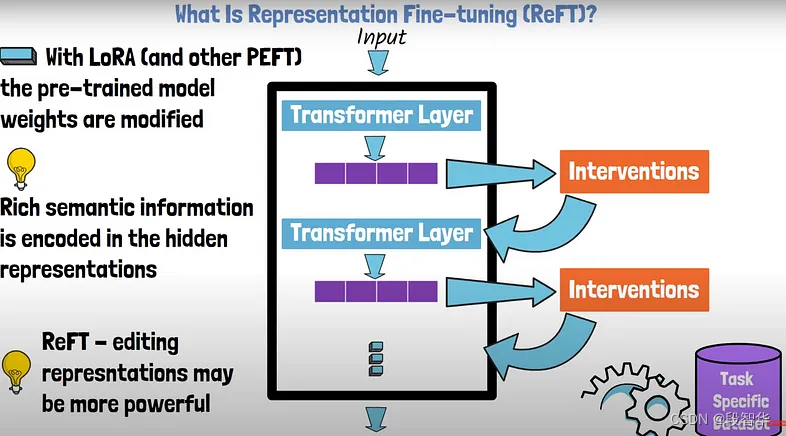
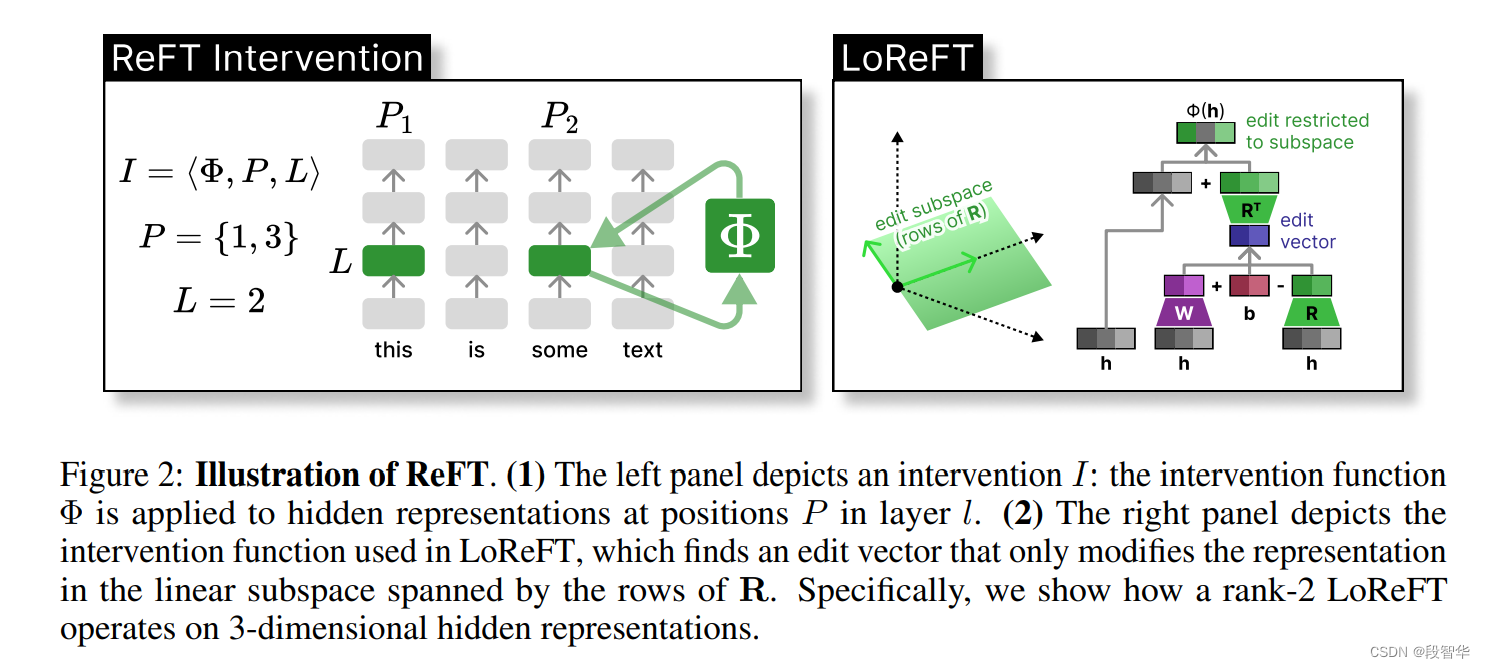
大模型技术分享



《企业级生成式人工智能LLM大模型技术、算法及案例实战》线上高级研修讲座
模块一:Generative AI 原理本质、技术内核及工程实践周期详解
模块二:工业级 Prompting 技术内幕及端到端的基于LLM 的会议助理实战
模块三:三大 Llama 2 模型详解及实战构建安全可靠的智能对话系统
模块四:生产环境下 GenAI/LLMs 的五大核心问题及构建健壮的应用实战
模块五:大模型应用开发技术:Agentic-based 应用技术及案例实战
模块六:LLM 大模型微调及模型 Quantization 技术及案例实战
模块七:大模型高效微调 PEFT 算法、技术、流程及代码实战进阶
模块八:LLM 模型对齐技术、流程及进行文本Toxicity 分析实战
模块九:构建安全的 GenAI/LLMs 核心技术Red Teaming 解密实战
模块十:构建可信赖的企业私有安全大模型Responsible AI 实战
Llama3关键技术深度解析与构建Responsible AI、算法及开发落地实战
1、Llama开源模型家族大模型技术、工具和多模态详解:学员将深入了解Meta Llama 3的创新之处,比如其在语言模型技术上的突破,并学习到如何在Llama 3中构建trust and safety AI。他们将详细了解Llama 3的五大技术分支及工具,以及如何在AWS上实战Llama指令微调的案例。
2、解密Llama 3 Foundation Model模型结构特色技术及代码实现:深入了解Llama 3中的各种技术,比如Tiktokenizer、KV Cache、Grouped Multi-Query Attention等。通过项目二逐行剖析Llama 3的源码,加深对技术的理解。
3、解密Llama 3 Foundation Model模型结构核心技术及代码实现:SwiGLU Activation Function、FeedForward Block、Encoder Block等。通过项目三学习Llama 3的推理及Inferencing代码,加强对技术的实践理解。
4、基于LangGraph on Llama 3构建Responsible AI实战体验:通过项目四在Llama 3上实战基于LangGraph的Responsible AI项目。他们将了解到LangGraph的三大核心组件、运行机制和流程步骤,从而加强对Responsible AI的实践能力。
5、Llama模型家族构建技术构建安全可信赖企业级AI应用内幕详解:深入了解构建安全可靠的企业级AI应用所需的关键技术,比如Code Llama、Llama Guard等。项目五实战构建安全可靠的对话智能项目升级版,加强对安全性的实践理解。
6、Llama模型家族Fine-tuning技术与算法实战:学员将学习Fine-tuning技术与算法,比如Supervised Fine-Tuning(SFT)、Reward Model技术、PPO算法、DPO算法等。项目六动手实现PPO及DPO算法,加强对算法的理解和应用能力。
7、Llama模型家族基于AI反馈的强化学习技术解密:深入学习Llama模型家族基于AI反馈的强化学习技术,比如RLAIF和RLHF。项目七实战基于RLAIF的Constitutional AI。
8、Llama 3中的DPO原理、算法、组件及具体实现及算法进阶:学习Llama 3中结合使用PPO和DPO算法,剖析DPO的原理和工作机制,详细解析DPO中的关键算法组件,并通过综合项目八从零开始动手实现和测试DPO算法,同时课程将解密DPO进阶技术Iterative DPO及IPO算法。
9、Llama模型家族Safety设计与实现:在这个模块中,学员将学习Llama模型家族的Safety设计与实现,比如Safety in Pretraining、Safety Fine-Tuning等。构建安全可靠的GenAI/LLMs项目开发。
10、Llama 3构建可信赖的企业私有安全大模型Responsible AI系统:构建可信赖的企业私有安全大模型Responsible AI系统,掌握Llama 3的Constitutional AI、Red Teaming。
解码Sora架构、技术及应用
一、为何Sora通往AGI道路的里程碑?
1,探索从大规模语言模型(LLM)到大规模视觉模型(LVM)的关键转变,揭示其在实现通用人工智能(AGI)中的作用。
2,展示Visual Data和Text Data结合的成功案例,解析Sora在此过程中扮演的关键角色。
3,详细介绍Sora如何依据文本指令生成具有三维一致性(3D consistency)的视频内容。 4,解析Sora如何根据图像或视频生成高保真内容的技术路径。
5,探讨Sora在不同应用场景中的实践价值及其面临的挑战和局限性。
二、解码Sora架构原理
1,DiT (Diffusion Transformer)架构详解
2,DiT是如何帮助Sora实现Consistent、Realistic、Imaginative视频内容的?
3,探讨为何选用Transformer作为Diffusion的核心网络,而非技术如U-Net。
4,DiT的Patchification原理及流程,揭示其在处理视频和图像数据中的重要性。
5,Conditional Diffusion过程详解,及其在内容生成过程中的作用。
三、解码Sora关键技术解密
1,Sora如何利用Transformer和Diffusion技术理解物体间的互动,及其对模拟复杂互动场景的重要性。
2,为何说Space-time patches是Sora技术的核心,及其对视频生成能力的提升作用。
3,Spacetime latent patches详解,探讨其在视频压缩和生成中的关键角色。
4,Sora Simulator如何利用Space-time patches构建digital和physical世界,及其对模拟真实世界变化的能力。
5,Sora如何实现faithfully按照用户输入文本而生成内容,探讨背后的技术与创新。
6,Sora为何依据abstract concept而不是依据具体的pixels进行内容生成,及其对模型生成质量与多样性的影响。
GPT 自回归语言模型架构、数学原理及内幕-简介
GPT 自回归语言模型架构、数学原理及内幕-简介
基于 Transformer 的 Rasa Internals 解密之 Retrieval Model 剖析-简介
基于 Transformer 的 Rasa Internals 解密之 Retrieval Model 剖析-简介
Transformer语言模型架构、数学原理及内幕机制-简介
Transformer语言模型架构、数学原理及内幕机制-简介




